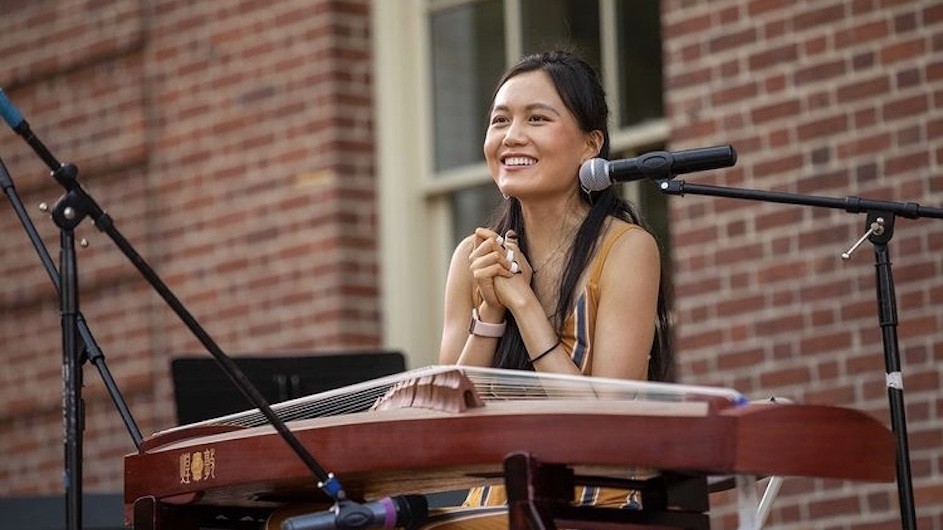A Long-Standing Interest in Psychology Led Her to Dental School
Bree Zhang isn’t just a dentist-in-training. She’s a visual artist and musician, too.

Notebook is a Columbia News series that highlights just some of the many fascinating students who study at our University.
Bree Zhang, the president of the class of 2026 at the College of Dental Medicine, hopes to use dentistry to improve the lives of her future patients. When she isn't studying, Zhang leads a bustling artistic life playing the traditional Chinese instrument, the guzheng, at venues such as Carnegie Hall, and creating visual art that she posts online in timelapse videos that show how the artwork came together. Columbia News spoke with Zhang about her many endeavors, and how she decided to pursue dentistry.
You studied psychology as an undergraduate. When did you first think you might be interested in pursuing dentistry?
I always loved psychology and was considering becoming a psychologist or psychiatrist for a long time. But sophomore year, I realized I also wanted to work with my hands—I considered a profession in the medical field, and dentistry seemed to be the most hands-on. Being able to improve someone’s quality of life and their ability to eat, sleep, talk, smile is huge.
You play the guzheng, a traditional Chinese string instrument. How did you first get interested in guzheng? What's your favorite place you've ever played?
When I was 5 years old, I heard these super pretty plucking sounds coming from a classroom next door at a local Chinese art lesson center. When I found out the music came from the 古筝, or guzheng, I begged my mother to let me learn how to play. I had to wait until I was 8 when I was finally able to start taking lessons, which honestly probably motivated me more because I was so excited to learn after that long wait. Since then, guzheng has been with me through thick and thin and has helped me reclaim my culture and embrace my “Chinese-ness,” something I struggled with a lot in high-school.
I think the favorite venue (in terms of acoustics) I’ve played is probably Carnegie Hall. However, my favorite place emotionally to play is probably the Rhode Island hospital cancer center where I got to connect my music with patients and hear their stories while I was a college student at Brown. In particular, they always loved my song, “Returning Home,” which I composed for my grandmother.
You have a wide-ranging visual art practice, but I was particularly intrigued by your timelapse art. Can you explain what that is and how you started doing it?
Yes, for these pieces, I film myself painting, then put it together into a timelapse video.
I have always been fascinated by the “process” and “journey” of a piece of art—how it morphs and changes and organically develops, how the mistakes become part of the “canvas.”
Once I started doing more digital art, I decided to timelapse to keep a digital diary of my art pieces. It gives me a chance to capture the moment in time when I’m placing a certain brushstroke or overlaying a certain color.
Sometimes, the end product of an art piece can be intimidating, but I want to show that every final product starts from messy origins—and it’s important to trust the process. I used to be a perfectionist who had trouble creating art or starting a piece because I wanted my idea and execution to be perfect form the start. Time lapsing has become a way to counter that fear.
What are your favorite things to do in NYC when you're not studying or working?
Going to museums, concerts (there’s lots of amazing free concerts during the summertime), Broadway shows, exploring parks, ice skating during the winter, attending random pop ups, finding random photobooths, and finding new coffee shops to study in.
I’ve actually posted some videos via Columbia University Life precisely on my favorite things to do in NYC: Here's part 1 and part 2.
I’ve also done the walk of Manhattan from the top to bottom, which was super fun.